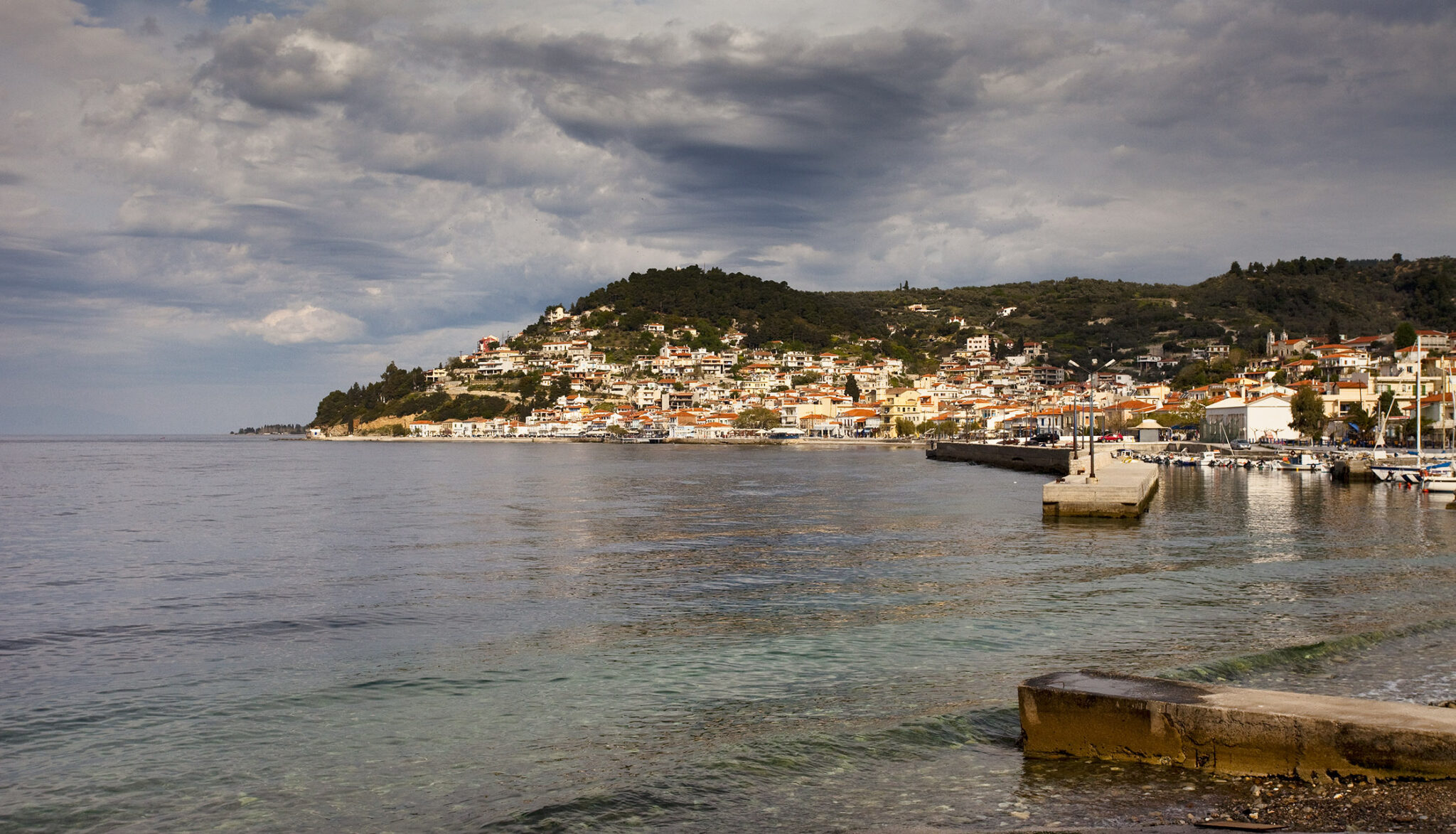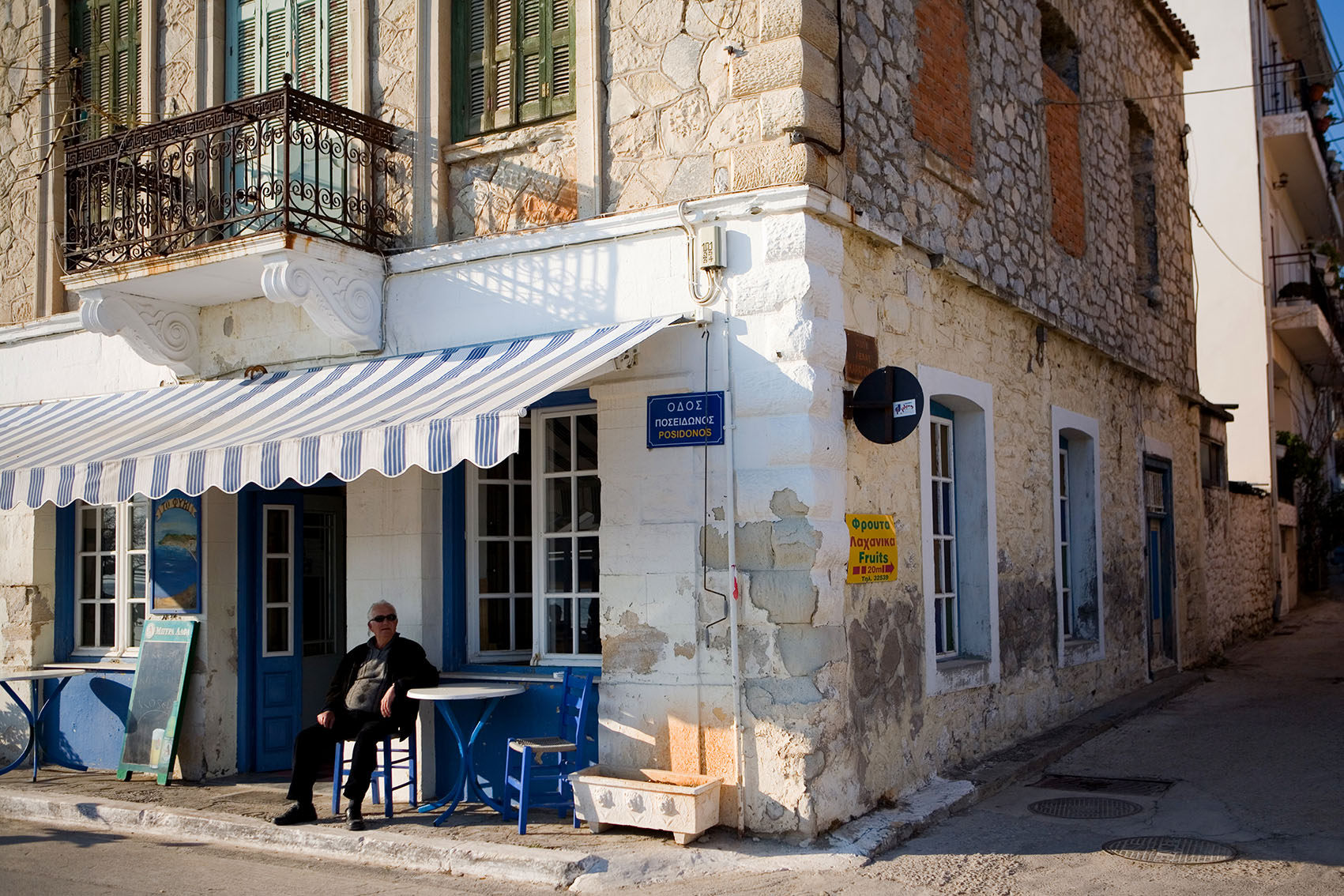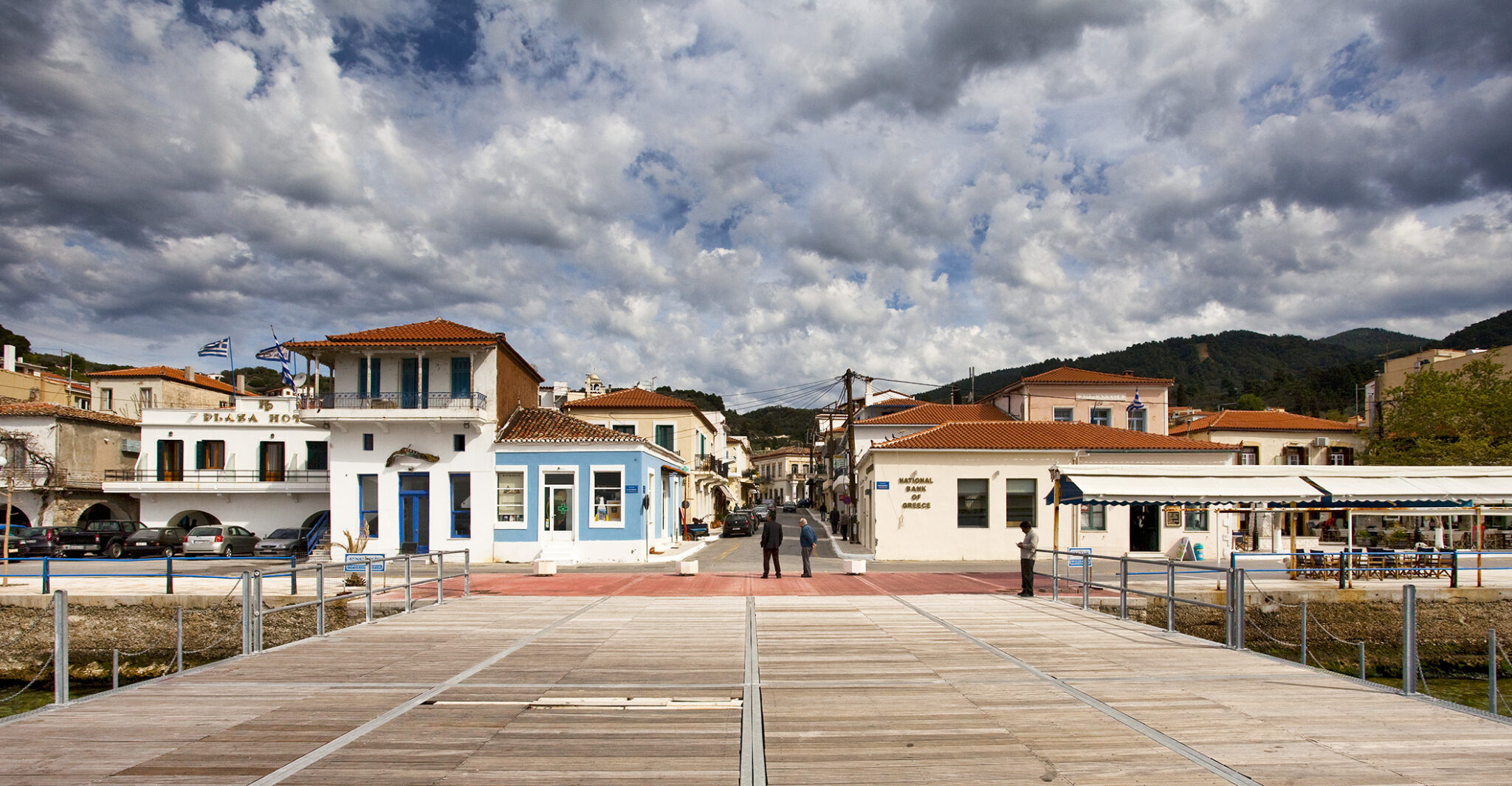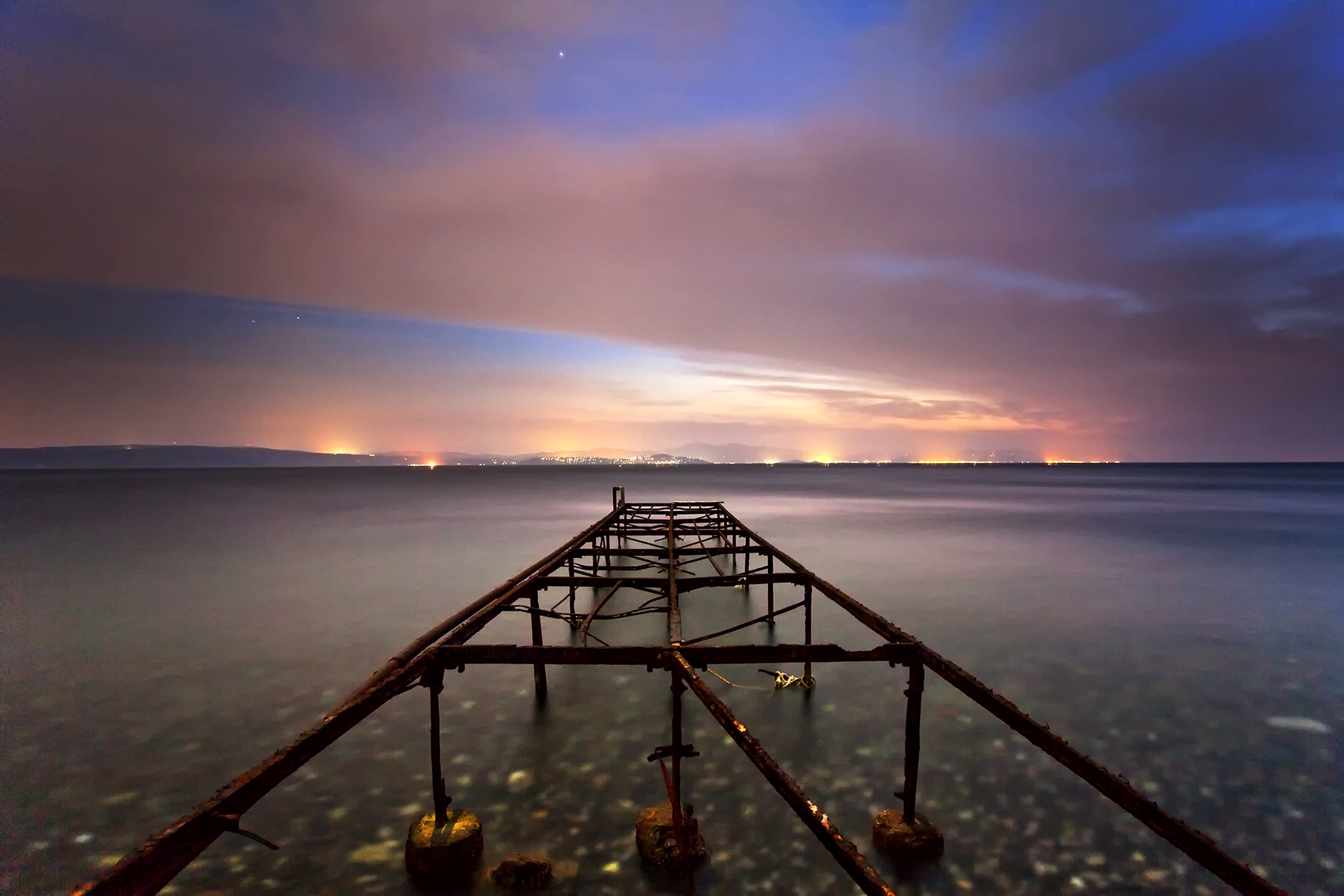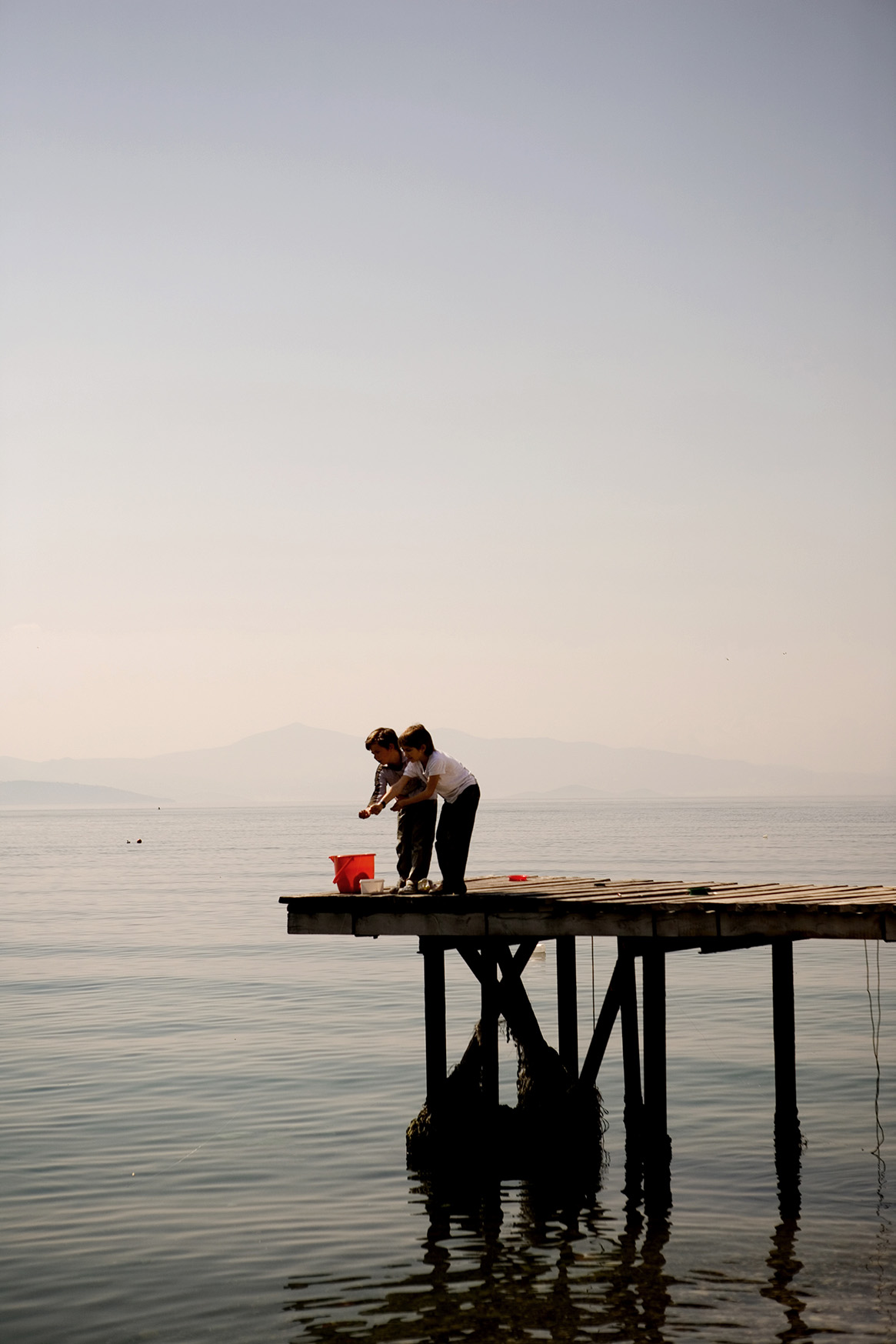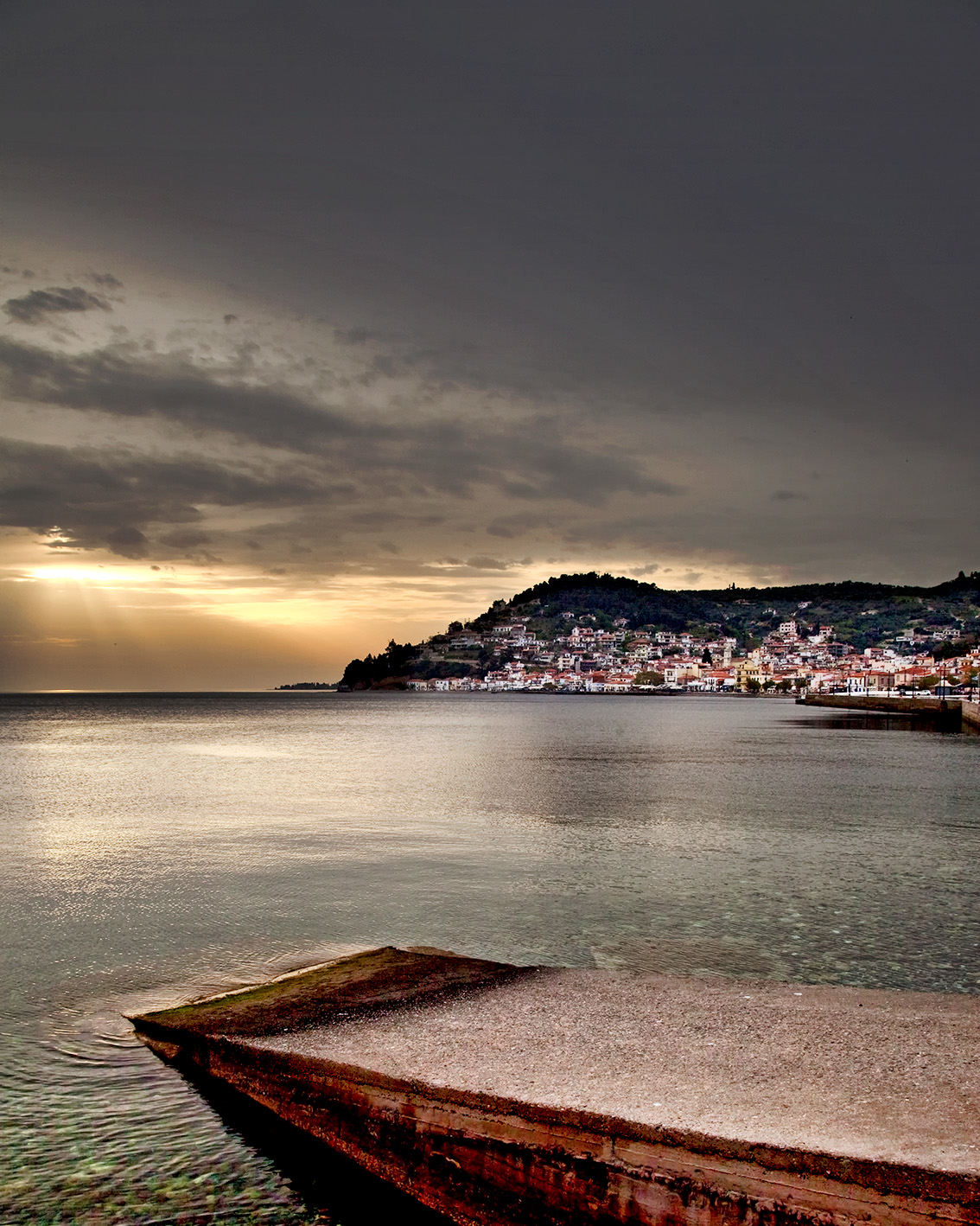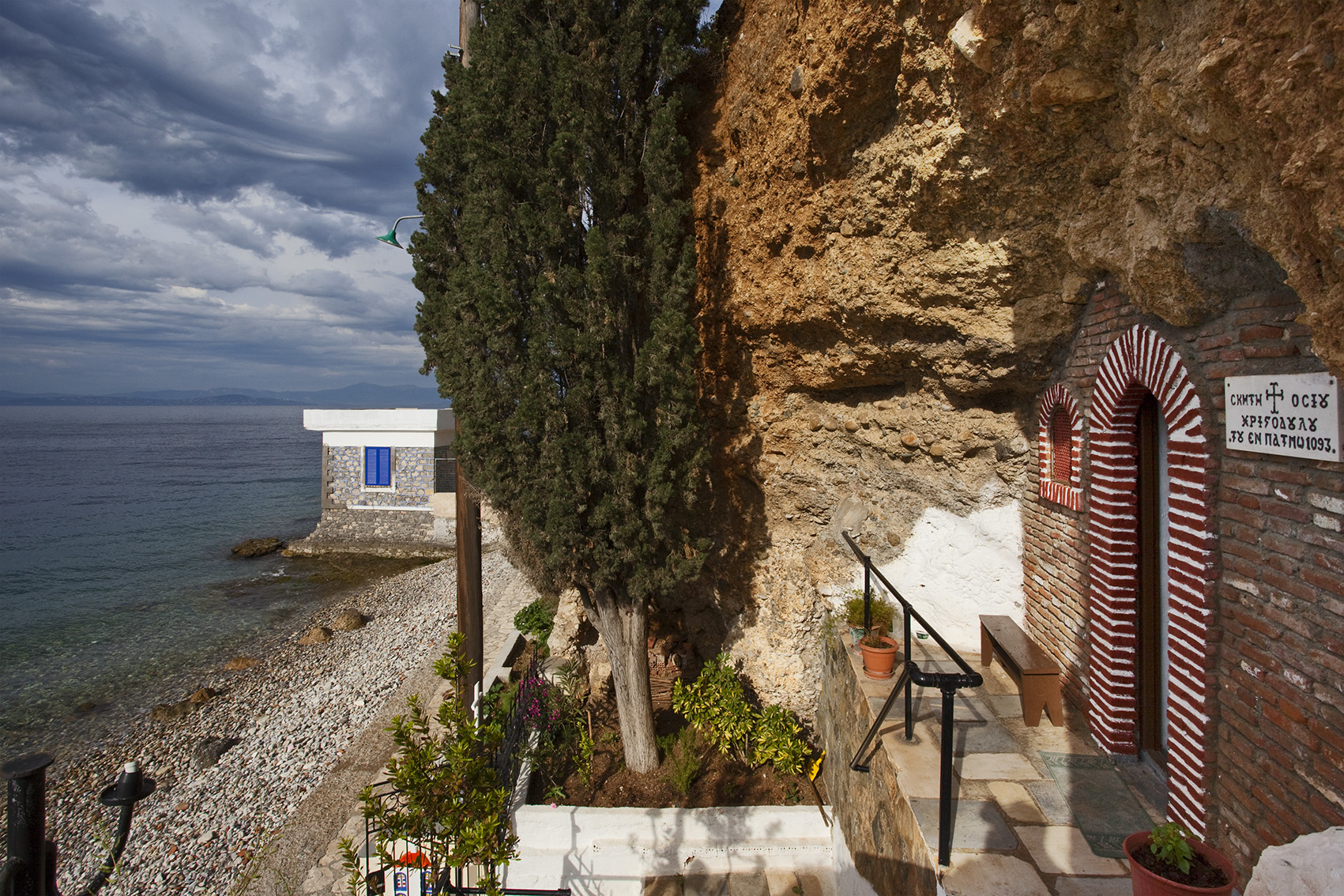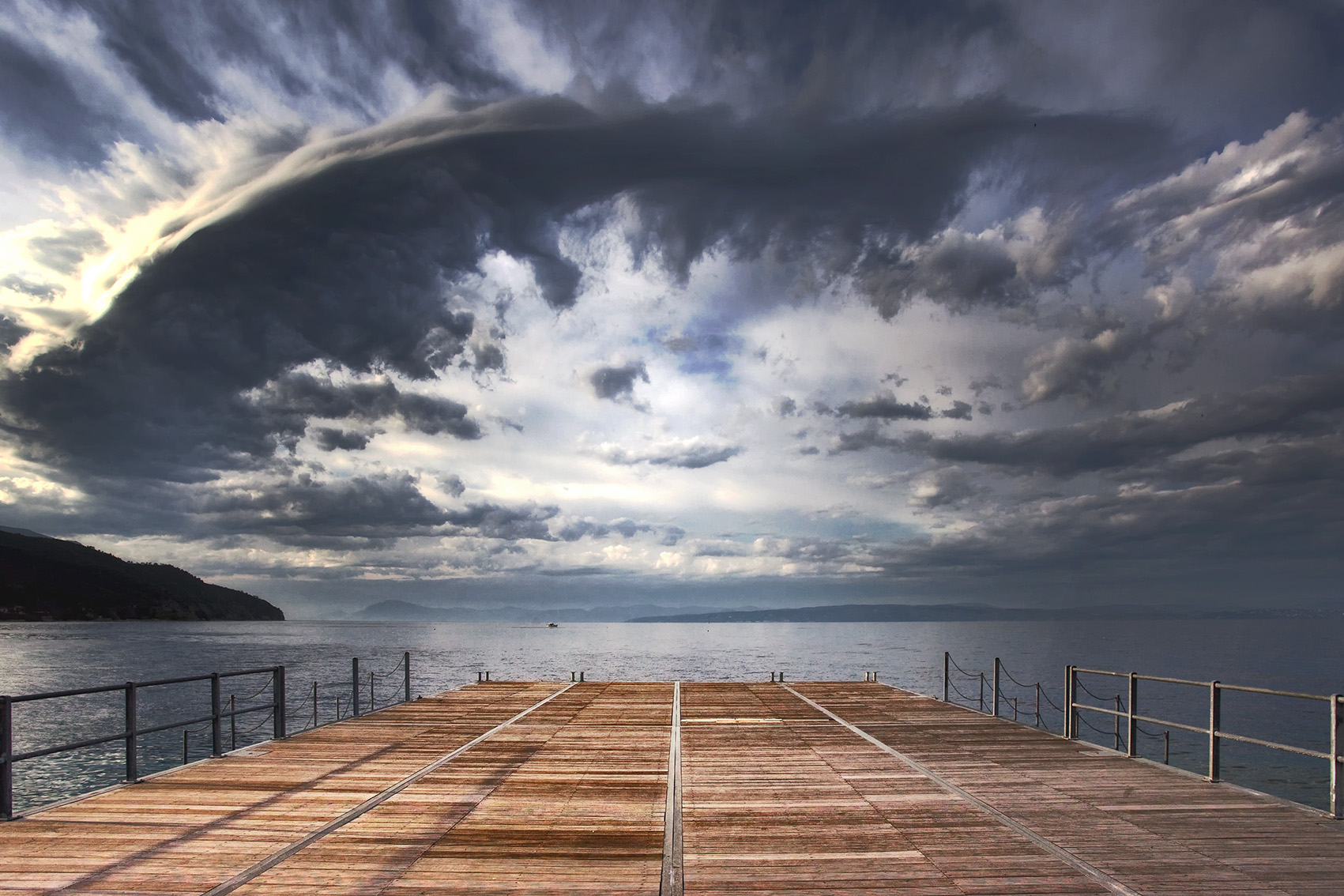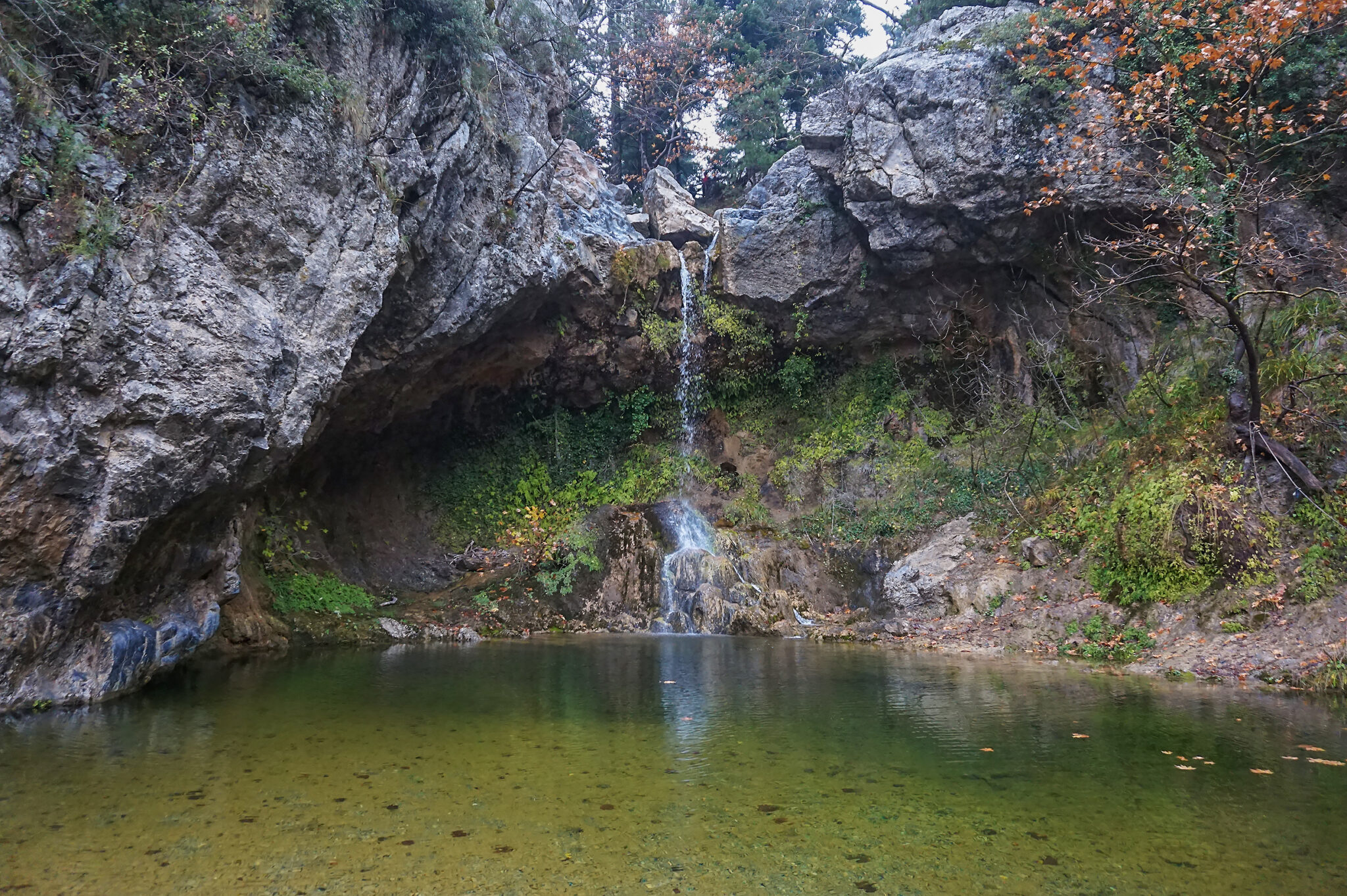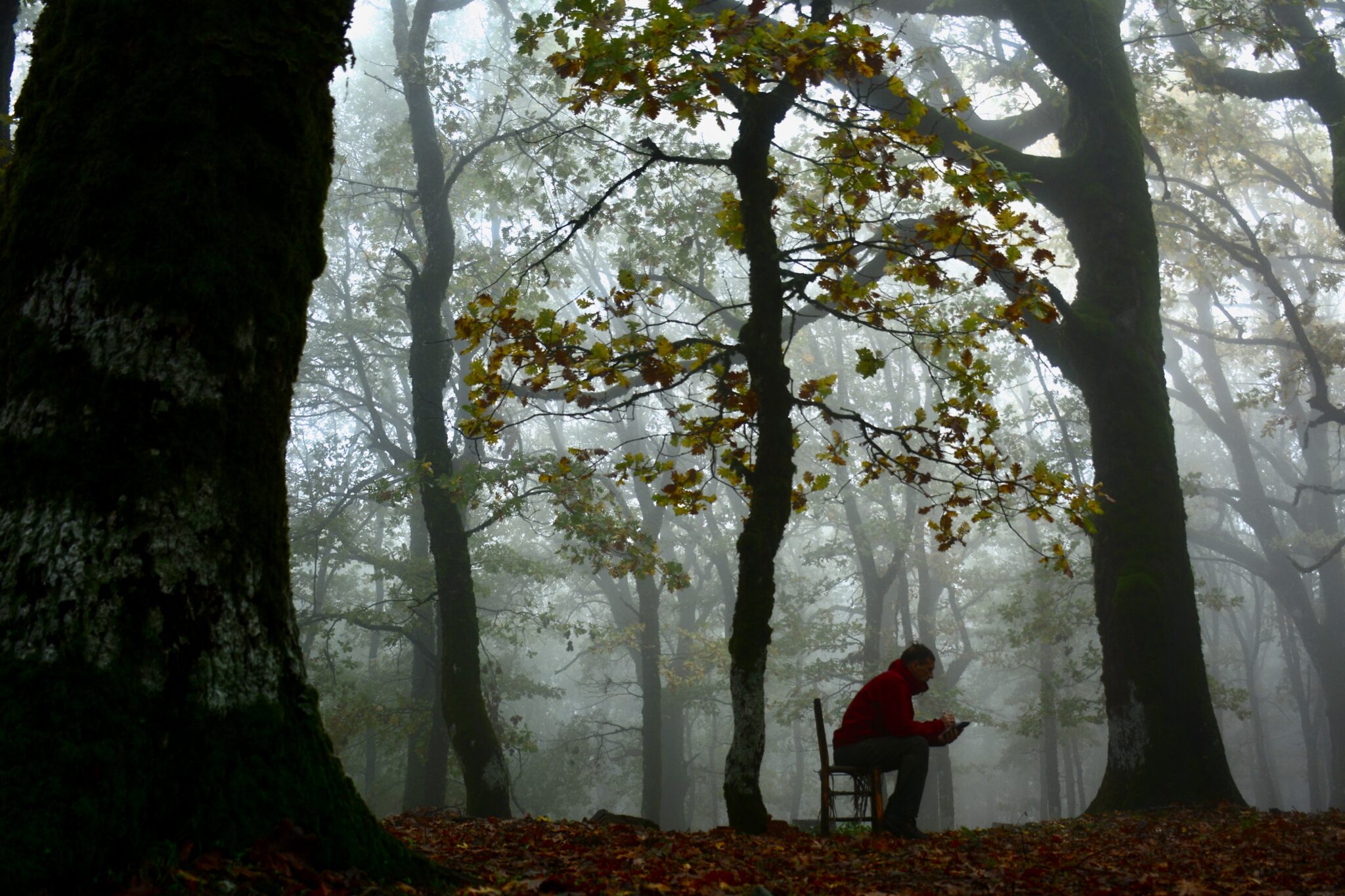Let’s start by acknowledging that Limni in Evia is not a great travel secret, as it is a popular destination for thousands of people from all over Greece during the summer months. In this article, however, we’ll be talking about the distinct wintertime impression that this small town in northern Evia, known for its Aegean and cosmopolitan aura, made on us.
Flanked by Mount Kandili, Limni stretches along the sea. Tragically, the mountain’s pine-covered slopes were largely incinerated in the summer of 2021, but the sight that unfolds before us is nonetheless impressive. As we approach the settlement, the white of the buildings with terracotta roofs are in stark contrast to the now darker hue of the mountain.
We walk along the well-known coastal road, which in the summer is full of crowds or busy with tourists having a coffee and a bite at the many cafés.
Limni was wealthier in the era before it became a largely visited place; indeed, it was one of the most important maritime centres of the small Greek state after the liberation and until the beginning of the 20th century. Add to this the mining of white stone and resin, products of much greater value for industrial use in earlier times, and it becomes apparent that Limni was a place inhabited and visited by wealthy people.
Neoclassical or “almost neoclassical” buildings dominate the architectural character of the town. Two of these buildings are the work of Ernst Ziller, and the mild winter day provided an excellent opportunity to see them and take photographs of them. Equally interesting was our visit to the town’s Historical and Folklore Museum.
We continue our walk and head in the direction of the exit to Katounia and the Monastery of Galataki. On the site where the Nautical Club is now located, there used to be a company that worked in the white stone industry. We can still see the aforementioned buildings, which were the resin processing factories, in a short and easy walk that reminds us of a trip through time. Old furnaces, ovens and staircases remind us of the town’s industrial past. Returning to Limni, we pass the old tannery and the hermitage of Christodoulos of Patmos. We then stop at Panagia Limnia – with its stunning bell tower – and the small church of Zoodochos Pigis, before settling into a seaside cafe to enjoy the retro beauty of a place 170 kilometres from the centre of Athens.
Indeed, a winter stroll in Limni offered us the opportunity to remember what many Greek seaside resorts were like before tourism became their main economic activity.
Top Travel Tips
Limni takes just over two and a half hours to drive from Athens, via Chalkida. Alternatively, it can be reached from Edipsos, by taking the ferry to Evia from the port of Arkitsa in Fthiotida.
The obvious season to visit Limni is, of course, the summer, as the area is renowned for its pretty seaside spots. However, as northern Evia also features several cultural and nature-lover’s activities and sights, it’s worth travelling there any time of the year.
After the devastating wildfires of 2021, the pine forests of northern Evia will take time to regain their former beauty and life. But even so, the mountain trail towards the well-known (and a summer swimming spot) Drymona waterfalls, 20 kilometres from Limni, has been restored.
Limni, as well as Evia in general, is also truly an amazing choice for those who love fish and seafood. But Limni is particularly famous for its excellent galaktoboureko that you’ll find in its pastry shops.
The rich pine forests of Northern Evia will unfortunately take time to regain their former form, as will much of the hiking network. But fortunately, the mountain trail towards the well-known Drymona waterfalls, 20 kilometres from Limni, has been fully restored. In the summer months, many daring individuals dive into its icy waters.
An hour away from Limni is Mount Telethrio, an untouched green paradise that hiking and motorcycling enthusiasts will love.
Limni Evias is just one of the many places in Northern Evia worth getting to know up close. You can read more about what to see, do, and eat there here.
Read also:
Discovering the ‘Tholos’ Tomb of Mynias



